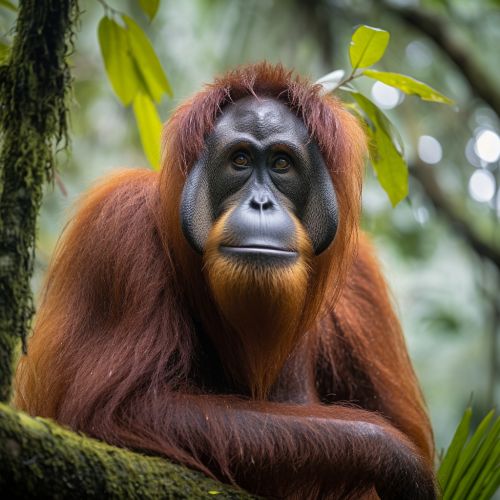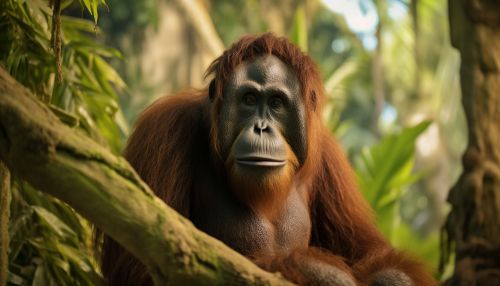Pongo
Taxonomy and Evolution
The genus Pongo is part of the family Hominidae, also known as the great apes. The name Pongo was coined by Linnaeus in the 18th century and is derived from a 16th-century account by Andrew Battell, an English sailor held prisoner by the Portuguese in Angola. Battell had described an ape he called 'Pongo', which is believed to be the first written account of a great ape.
The genus Pongo includes two extant species: the Bornean orangutan (Pongo pygmaeus) and the Sumatran orangutan (Pongo abelii). A third species, the Tapanuli orangutan (Pongo tapanuliensis), was identified in 2017, but its taxonomic status is still under debate.


The evolutionary history of the orangutans is complex and is still not fully understood. The orangutans are the only surviving species of the subfamily Ponginae, which also included several other species, such as the three extinct species of the genus Gigantopithecus, including the largest known primate Gigantopithecus blacki.
Physical Characteristics
Orangutans are the largest arboreal mammals and have proportionally long arms and short legs. They have a robust body, with a large, stout trunk, which is an adaptation to their arboreal lifestyle. Their skin is a reddish-brown color, which provides camouflage in the dense forests where they live.
The facial structure of orangutans is quite distinctive. They have a broad face with a low forehead, a prominent mouth area, and smaller eyes compared to other great apes. Males and females differ significantly in their physical appearance, a phenomenon known as sexual dimorphism. Males are larger than females and have large cheek flaps, or flanges, which are made of fatty tissue and are covered with hair.
Behavior and Ecology
Orangutans are primarily arboreal, spending most of their time in trees. They are solitary animals, with males and females generally coming together only to mate. Males are territorial and will make loud calls, known as long calls, to advertise their presence to females and warn off other males.
Orangutans are known for their high level of intelligence. They exhibit a variety of sophisticated behaviors, such as tool use and construction of elaborate sleeping nests. They are also one of the few animal species known to be capable of self-recognition in mirror tests.
Their diet is primarily frugivorous, with fruits making up to 60% of the orangutan's diet. They also consume leaves, bark, insects, and, on rare occasions, meat.
Conservation
Orangutans are among the most threatened primates due to habitat loss, primarily caused by the conversion of the tropical rainforest into palm oil plantations. They are also hunted for the illegal pet trade, and their slow reproductive rates make it difficult for the population to recover from these threats.
Conservation efforts for orangutans are focused on protecting their natural habitat and rehabilitating and releasing captured or displaced individuals back into the wild. Several organizations are involved in orangutan conservation, including the Borneo Orangutan Survival Foundation and the Sumatran Orangutan Conservation Programme.
